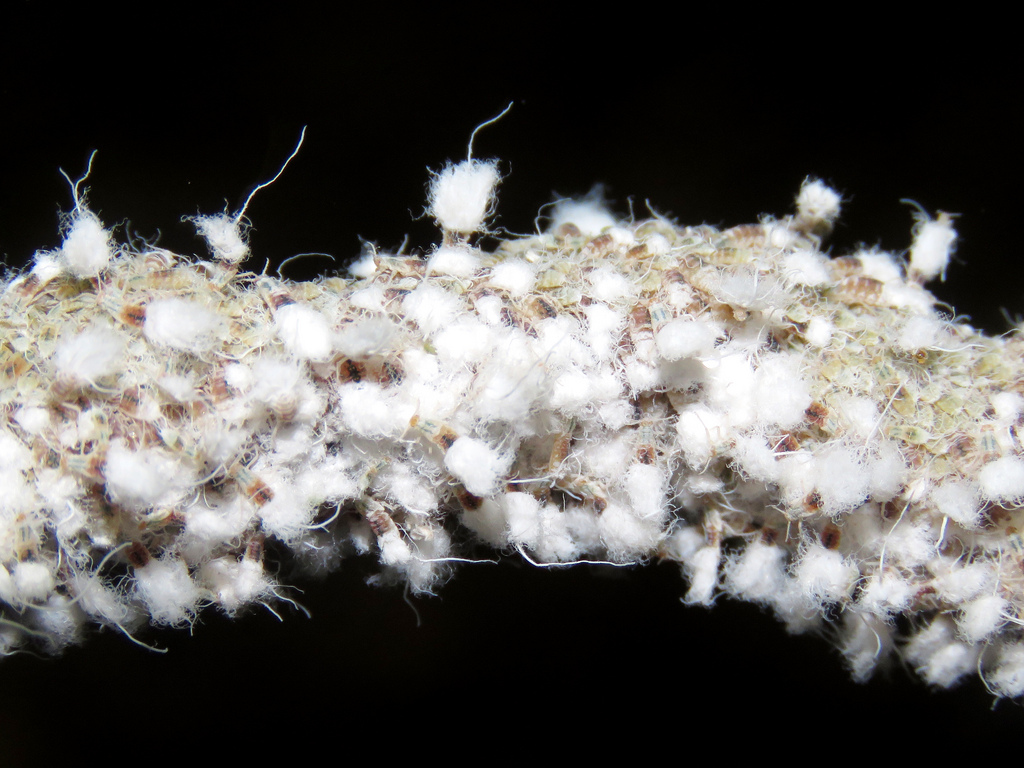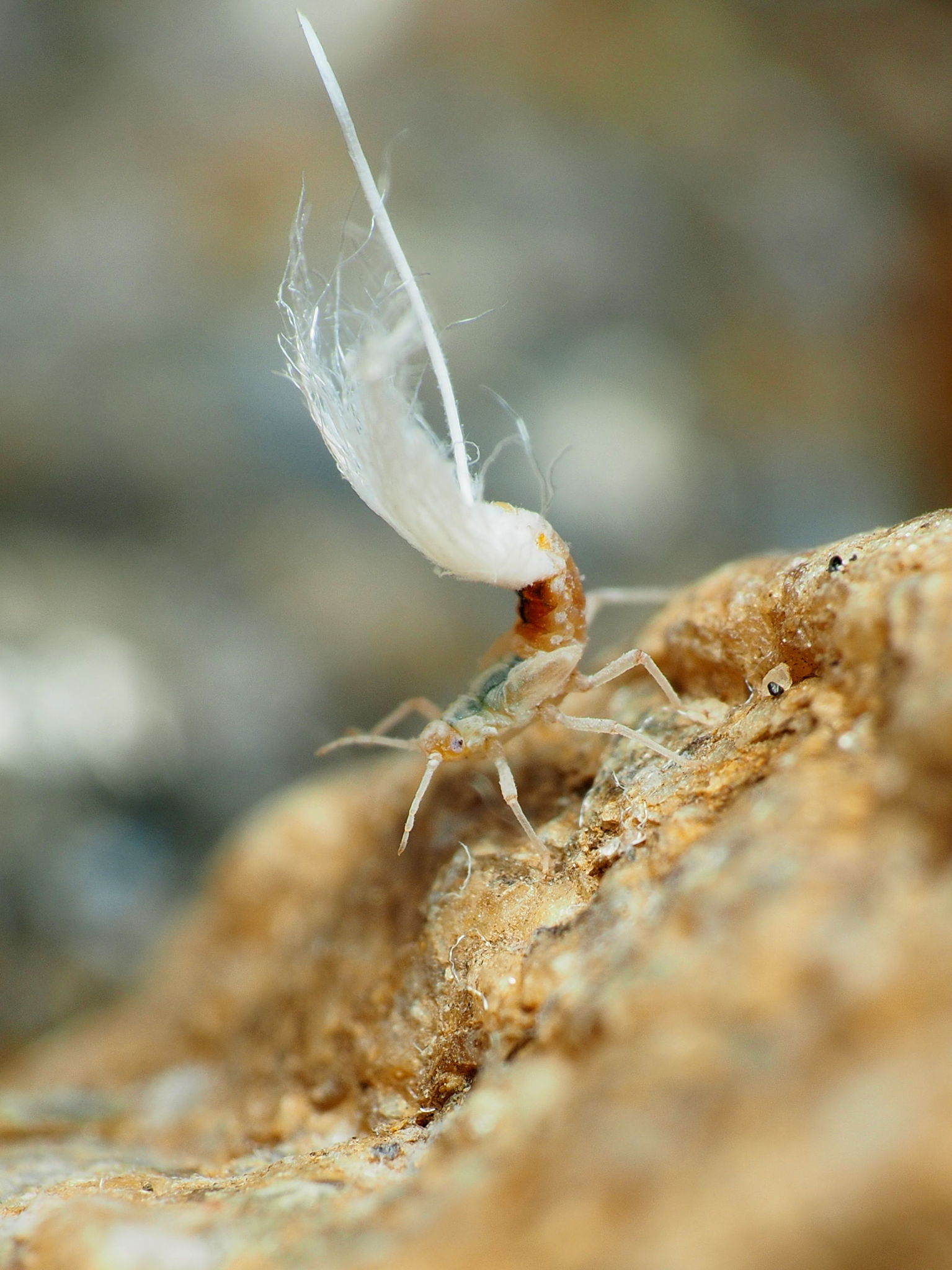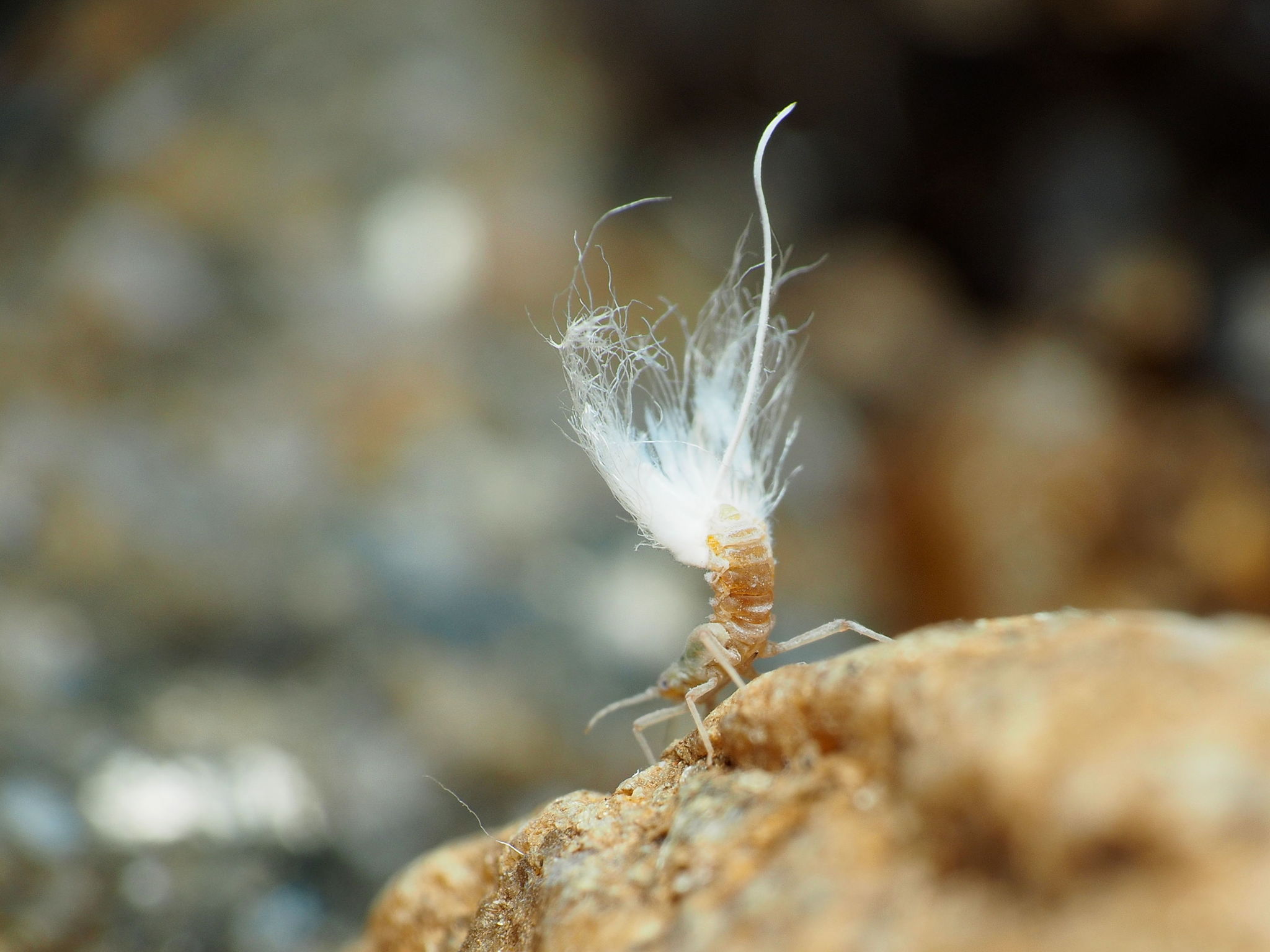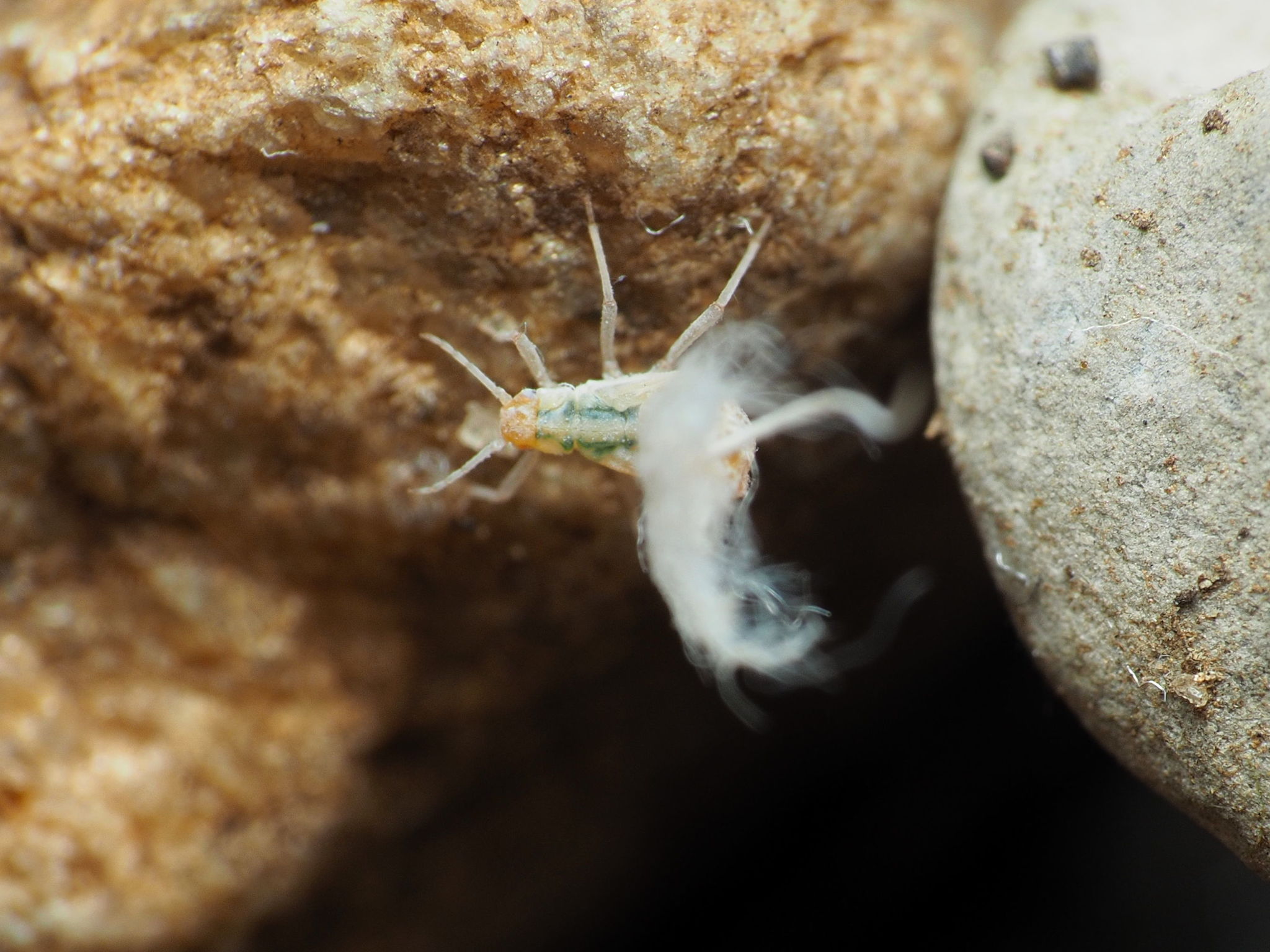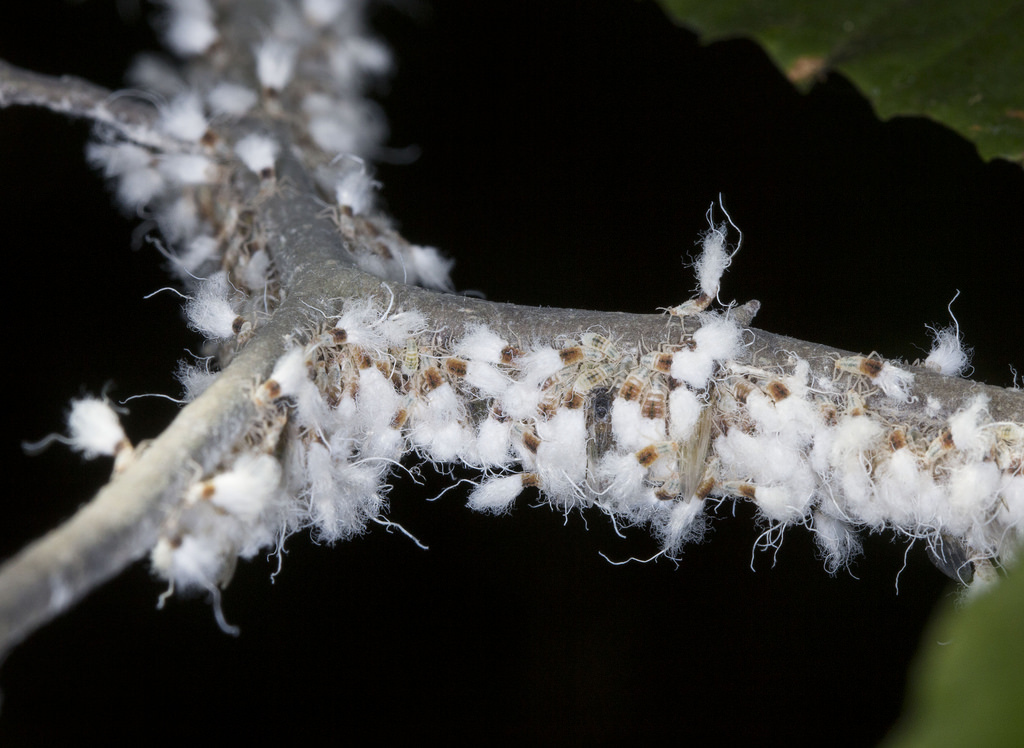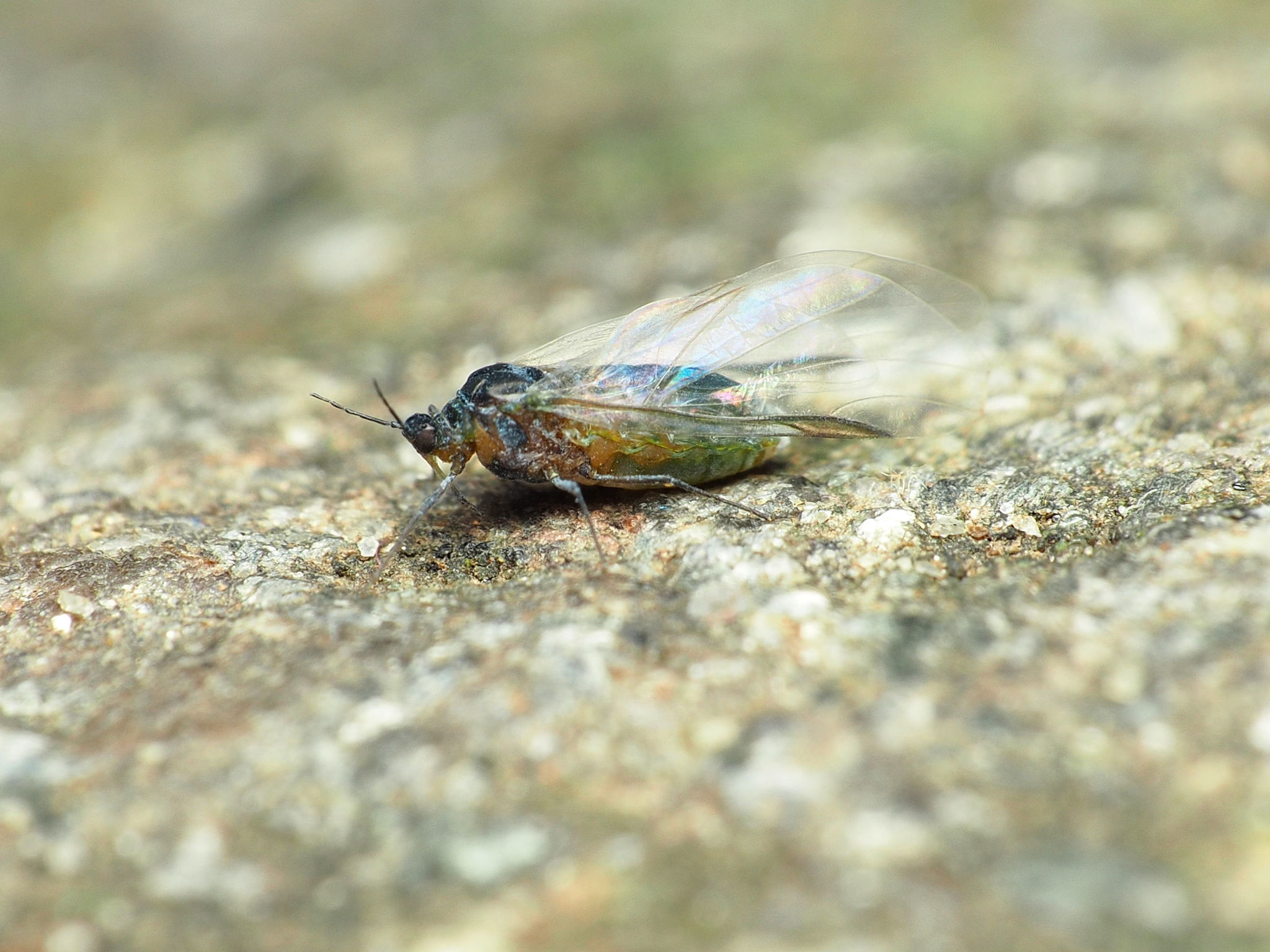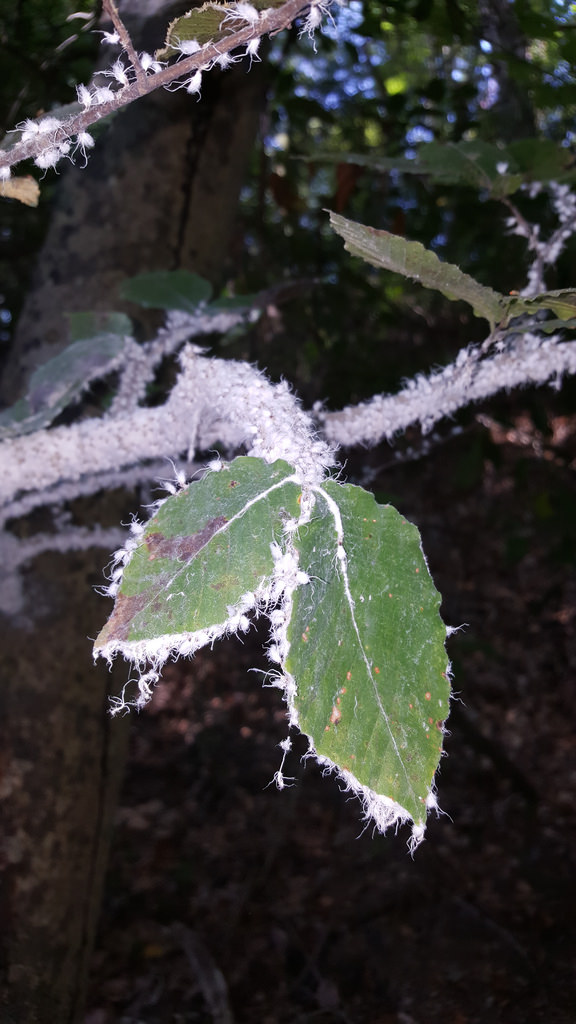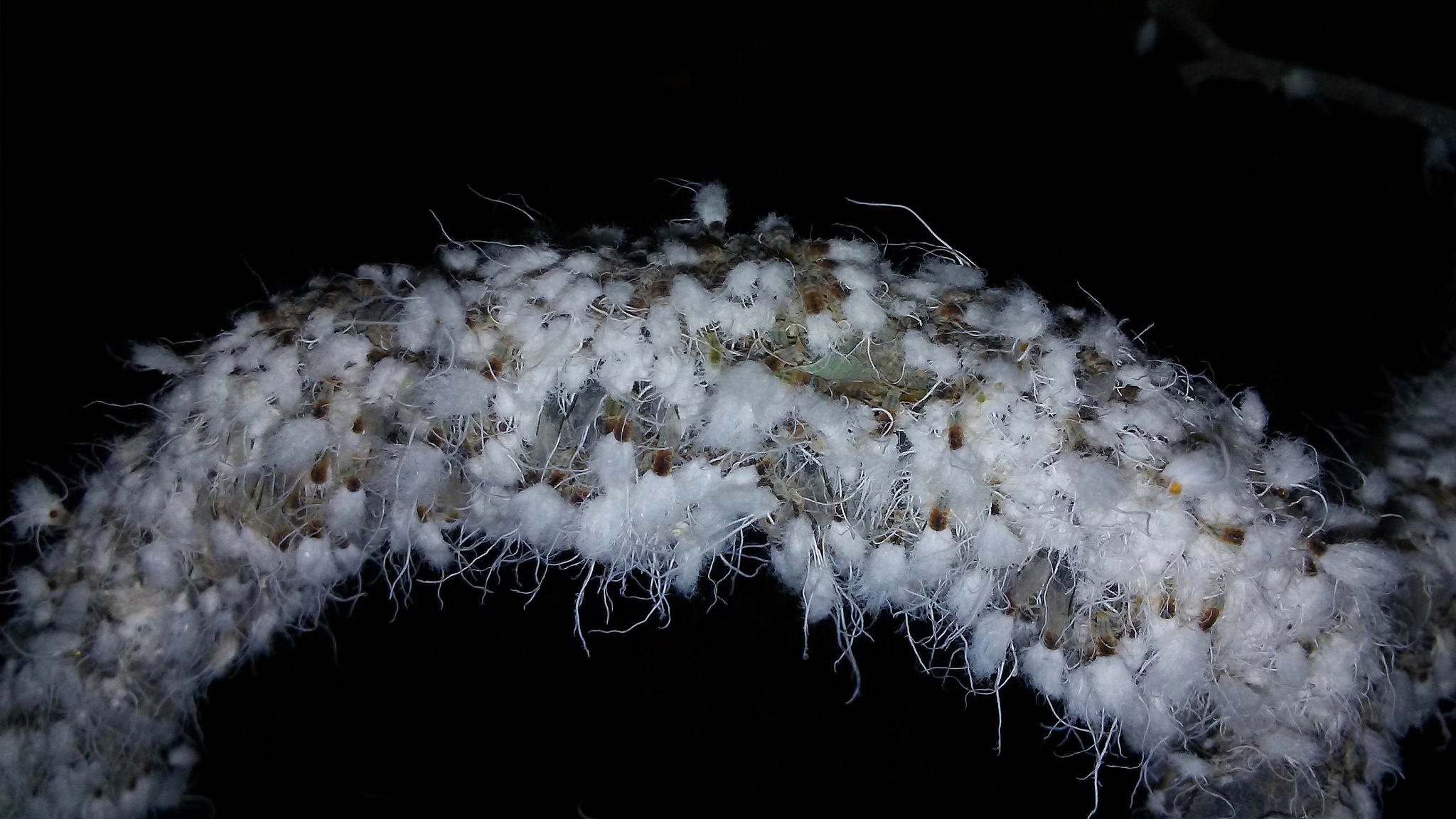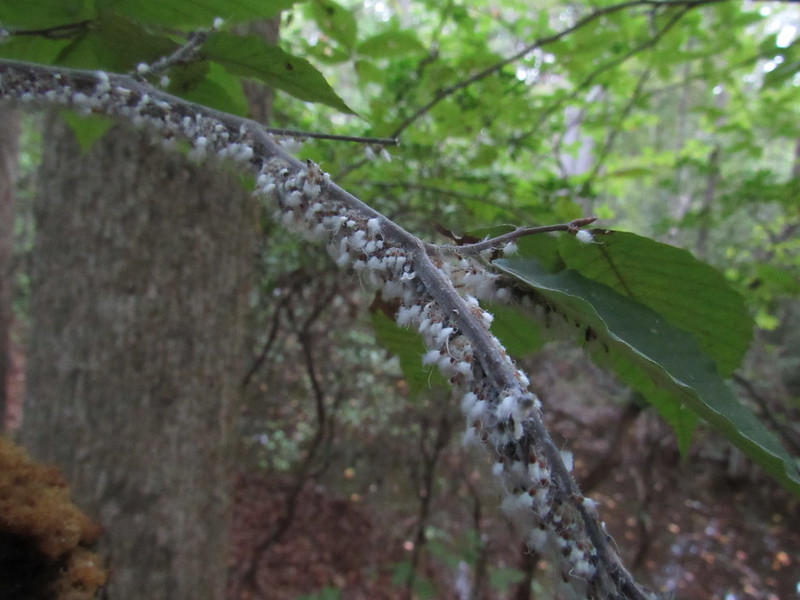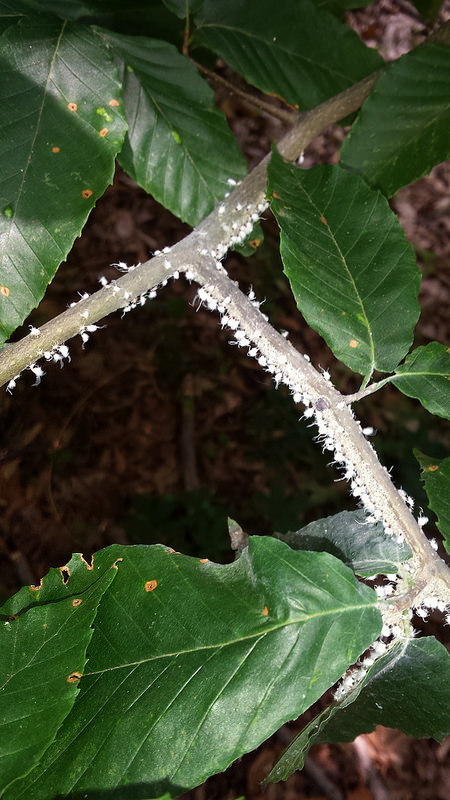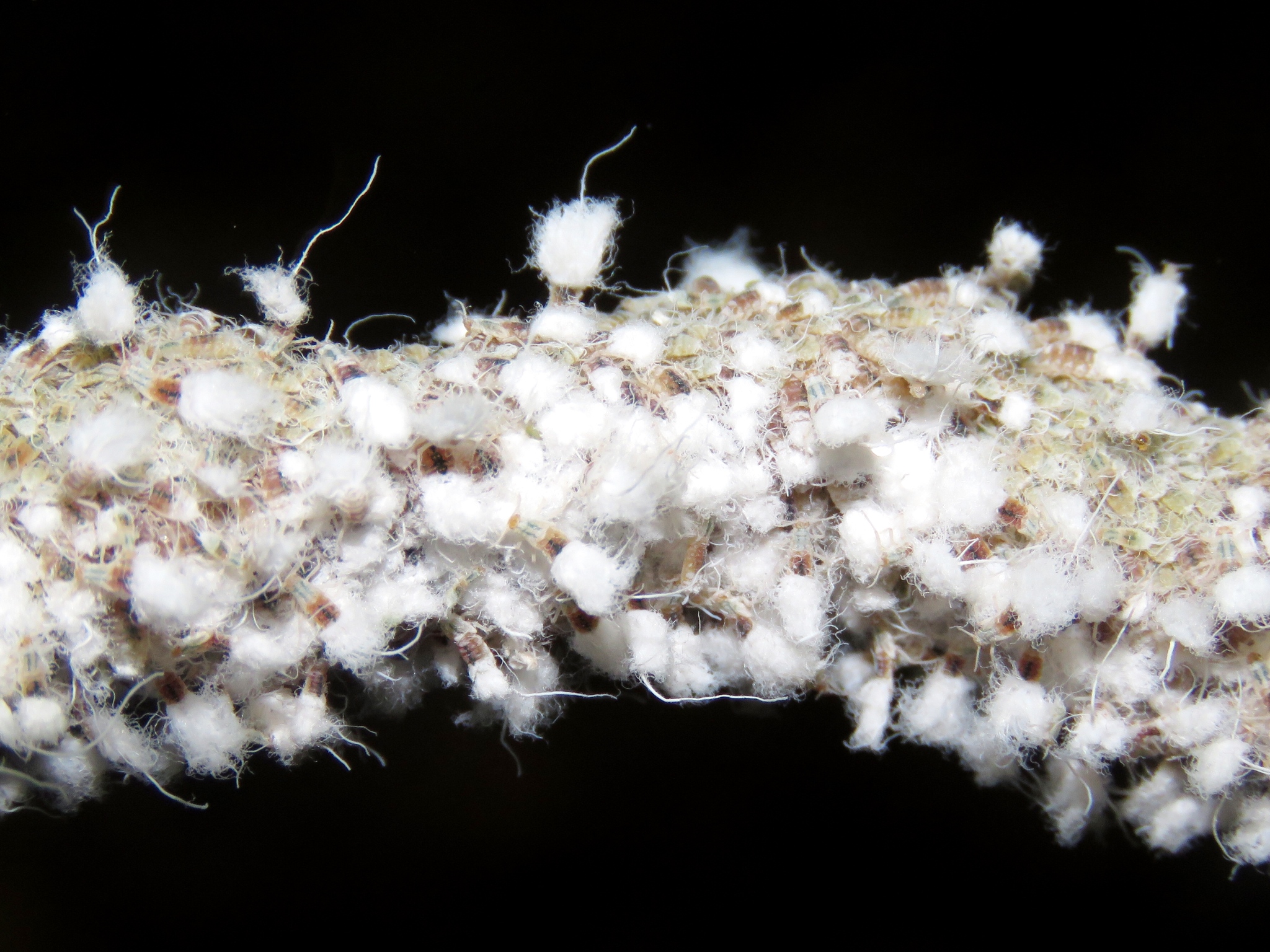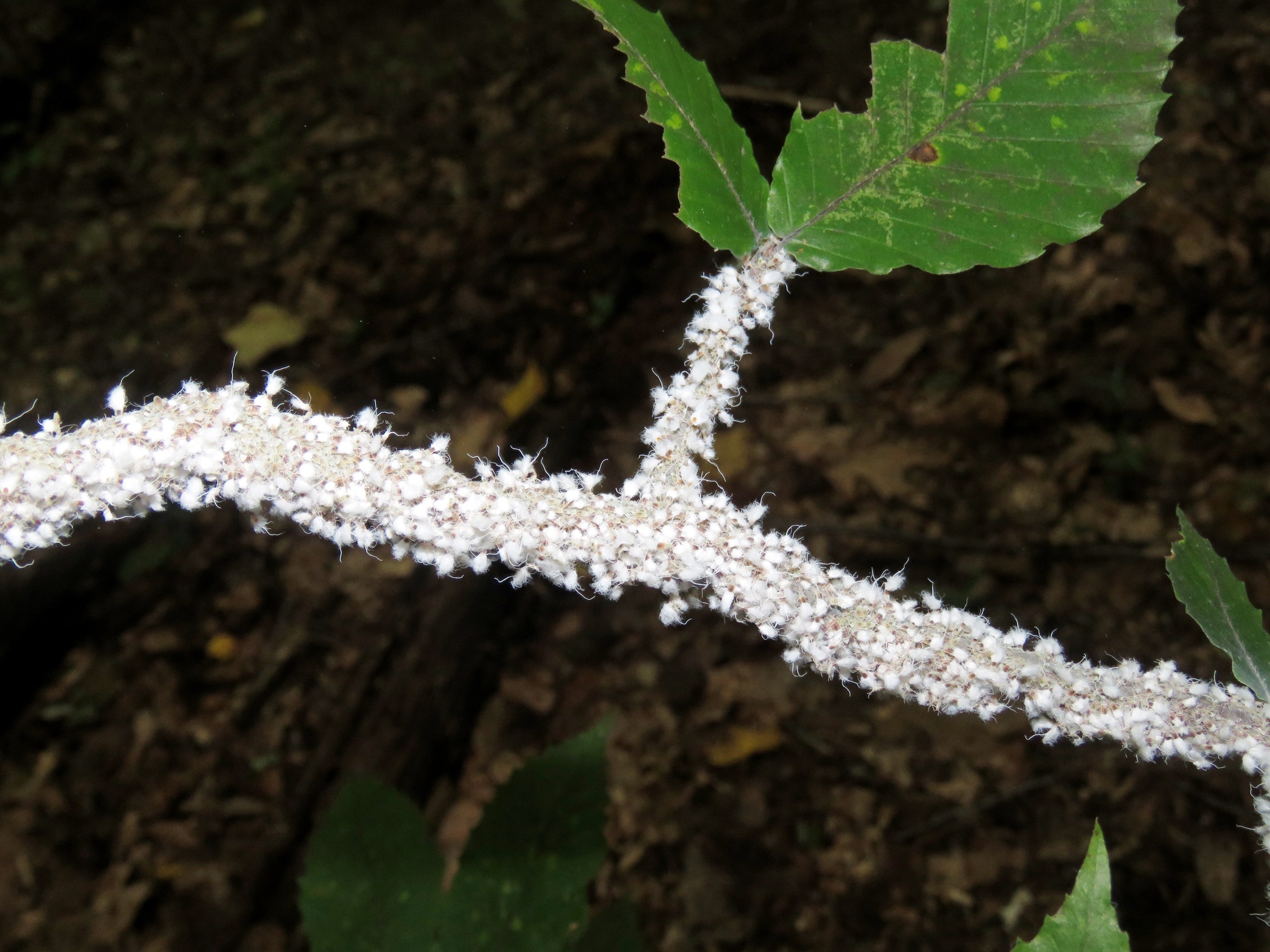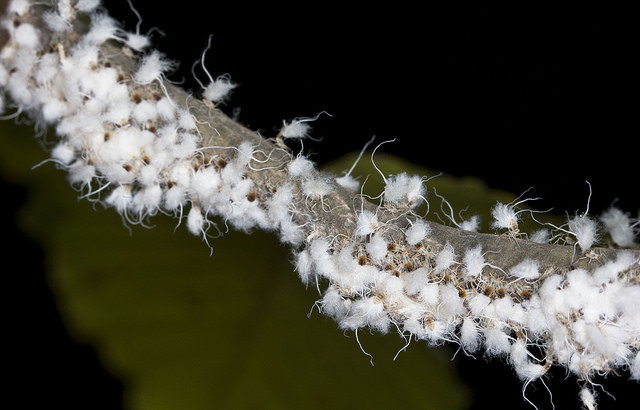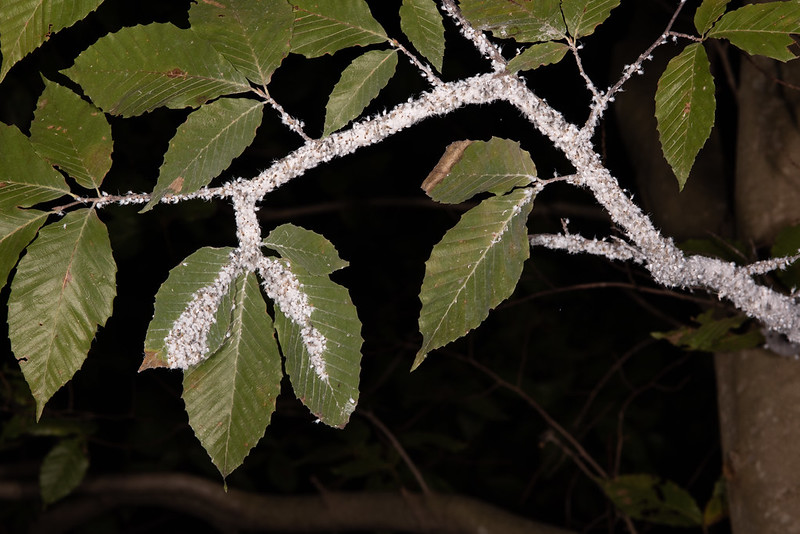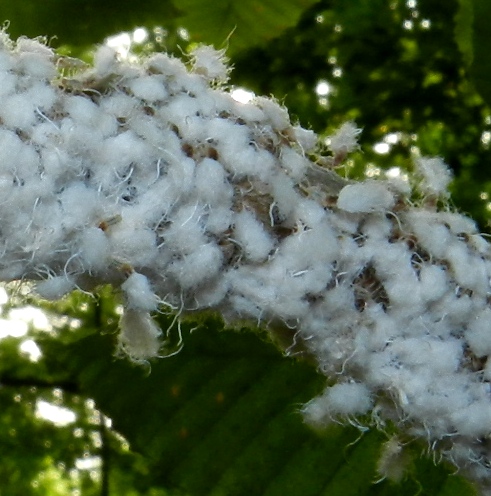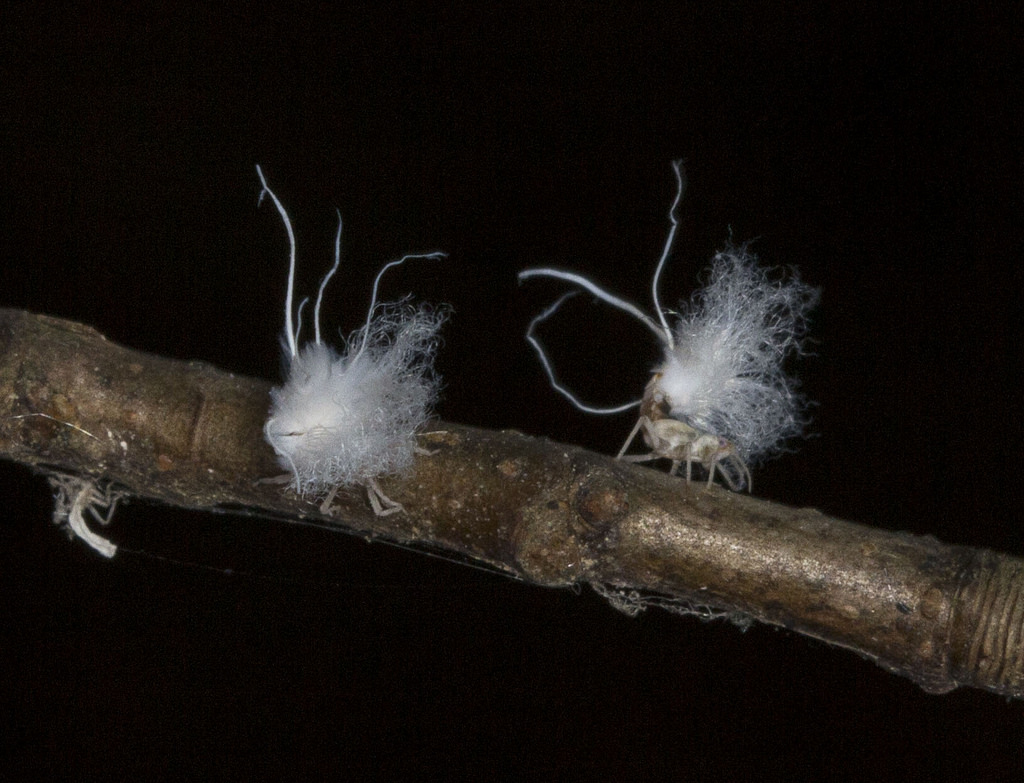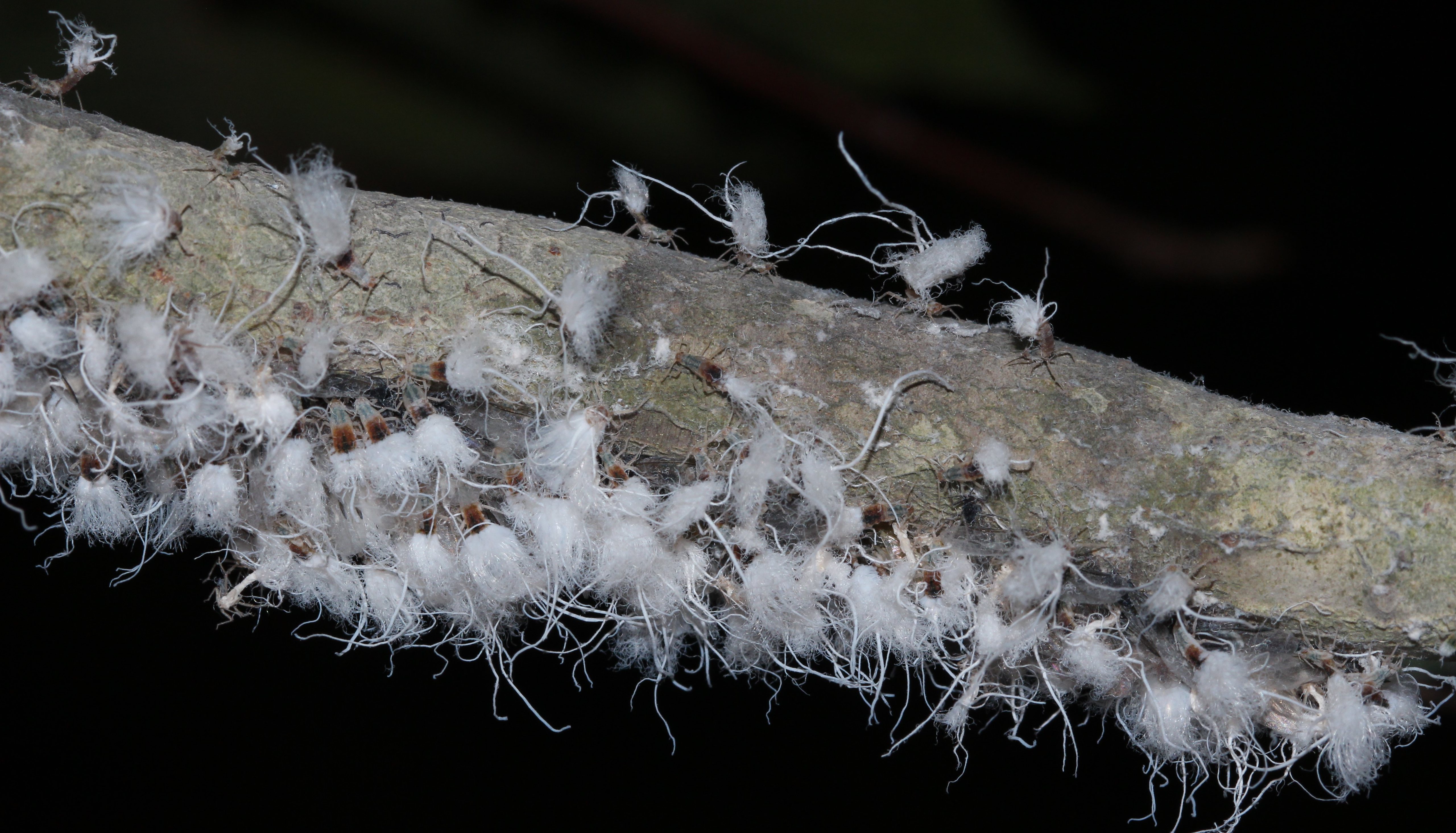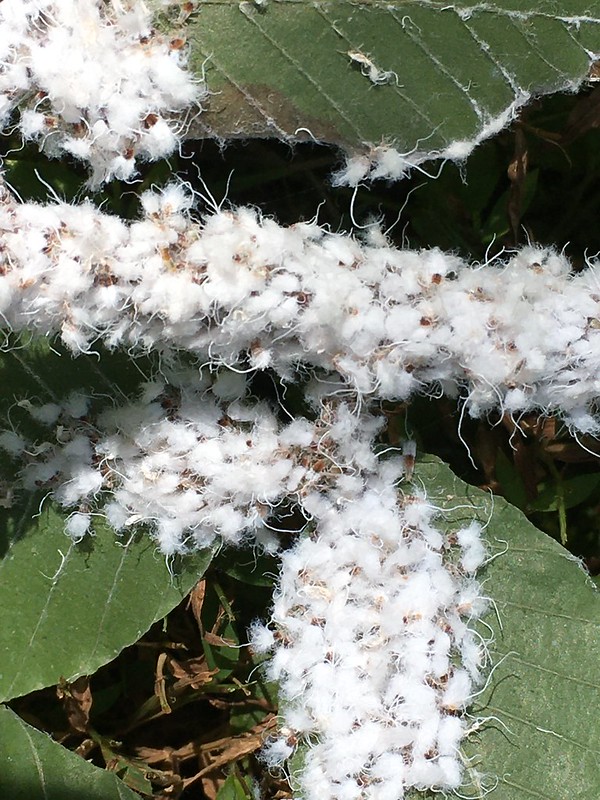Map Snapshot


















87 Records
Status
The natural range of the Beech Blight Aphid is from Maine to Florida. These aphids feed primarily on the sap of American Beech (Fagus grandifolia) trees. Dense colonies of the aphids collect on small branches and on the undersides of the leaves. Another host, depending on geographic location, is the roots of Bald Cypress (Taxodium distichum) trees. Because tree sap is sugary, the aphids’ excrement is also sugary. Known as “honeydew,” it coats the leaves and branches beneath the colonized beech branch. These native aphids are preyed on by other insects and birds, and generally do not cause significant harm to the host tree when kept in check by their natural predators.
Description
Beech Blight aphids have a woolly appearance because they are covered by filamentous, waxy secretions that form fuzzy “pom poms” at the tip of the abdomen. When feeling threatened, the aphids wave their fuzz back and forth rhythmically, earning them the nickname “boogie woogie” aphids.
Their life cycle is complicated. Only wingless females emerge from the eggs in spring. These produce a number of generations during the summer, all wingless females. Winged females develop in the fall and their young form normal males and females, which mate and produce the eggs from which new (all-female) aphids emerge in spring.
Where To Find
Look for the snowy white colonies on branches of American Beech trees in late summer through early fall.
Relationships
The aphids' copious honeydew excretions provide a substrate on which a sooty mold fungus, Scorias spongiosa, often grows and turns the substrate black. This is an example of a relationship between a tree, an insect, and a fungus. In addition, various ant species are attracted to the honeydew beneath aphid feeding areas on beech trees.
Seasonality Snapshot
Source: Wikipedia
| Beech blight aphid | |
|---|---|

| |
| Beech blight aphids | |
| Scientific classification | |
| Domain: | Eukaryota |
| Kingdom: | Animalia |
| Phylum: | Arthropoda |
| Class: | Insecta |
| Order: | Hemiptera |
| Suborder: | Sternorrhyncha |
| Family: | Aphididae |
| Subfamily: | Eriosomatinae |
| Genus: | Grylloprociphilus |
| Species: | G. imbricator
|
| Binomial name | |
| Grylloprociphilus imbricator (Fitch, 1851)
| |
The beech blight aphid (Grylloprociphilus imbricator) is a small insect in the order Hemiptera that feed primarily on the sap of American beech trees. The aphids form dense colonies on small branches and the undersides of leaves. A secondary host, based on their geographic location, is the roots of the bald cypress (Taxodium distichum), where some aphids alternate between hosts and others remain with Taxodium distichum year-round.[1]
The aphids themselves are a light bluish color with bodies covered with long, white, waxy filaments giving them a woolly appearance. They first become apparent in July and as populations continue to grow they become increasingly noticeable. Very high numbers can be seen on individual branches, sometimes extending onto leaves. Infested trees may appear to have their branches and twigs covered with snow. This aphid has a defensive behaviour in that it raises the posterior end of its body and sways from side to side when disturbed. Many aphids performing this action at the same time has led to this species being referred to as the "Boogie-Woogie Aphid".[2]
Deposits of sooty mold caused by the fungus Scorias spongiosa build up below the colonies, growing on the copious amounts of honeydew the insects exude.[3] Multiple ant species are attracted, gleaning honeydew beneath aphid feeding areas at beech trees and tending aphids at the cypress tree sites.[1]
The aphids do not usually cause much damage to overall tree health, but dieback is occasionally seen on very heavily infested branches. If infestations are heavy, twigs may die, but damage to the tree is usually minor. The aphids can be blasted off with a jet of water or can be controlled with any insecticides labeled for aphids. A wetting agent should be included to help penetrate the waxy body covering of the insect. Horticultural oil sprays and insecticidal soap have also been used successfully. Several parasites are known to attack this aphid and it is thought that they will in time be effective in reducing the population numbers of aphids.[2]
References
[edit]- ^ a b "Grylloprociphilus imbricator". InfluentialPoints.com. InfluentialPoints. Retrieved 1 December 2021.
- ^ a b UMass: The Beech Blight Aphid
- ^ Tom Volk's Fungus of the Month
External links
[edit]- Bugguide.net
- UMass Blight Information
- Dancing Aphids, by biologist David George Haskell
- Beach Blight Aphid Nymphs at Wincopin Park, Howard County, Maryland
